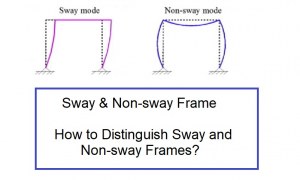🕑 Reading time: 1 minute
Seismic design of retaining wall is considerably complicated problem in which assumptions have to be considered in order to make indeterminable issue solvable employing theory of statics and differential calculus. The computation of each static and dynamic pressure acting on retaining wall need more research and site selection is becoming codified. Site reports provide location peak ground acceleration only and utilization of this information is left for the designer.
Contents:
When seismic design of retaining wall is required?
The code or standard that followed by designer play an important role in deciding whether the seismic design of retaining wall is required or not. The earthquake design necessity is argued by some. This is because, apart from waterfront wall where liquefaction is a possibility and walls which designed unsatisfactorily for static loads, evidence of retaining wall damage or deterioration approximately absent if the wall is designed perfectly. Furthermore, because retaining walls are not occupied consequently does not risk life safety except retaining walls that support buildings. However, International Building Code 2009 at section 1613 stated that every structure, and portion thereof, including nonstructural components that are permanently attached to structures and their supports and attachments, shall be designed and constructed to resist the effects of earthquake motions in accordance with ASCE 7. This obviously necessitate the design all structures for earthquake loads. Finally, it is advised that the designer check applicable Codes of the state in which specific seismic requirements are provided.Mononobe-Okabe Analysis of Earth Pressure
Mononobe-Okabe equation is the modification of coulomb equation and it considers seismic forces. The latter formula used to compute lateral earth pressure acts on retaining walls but it cannot be employed to calculate internal force which backfill soil impacts on the retaining walls during earthquake. The Mononobe-Okabe formula solve coulomb equation problem by taking both horizontal and vertical ground accelerations into consideration and provide seismic coefficients for passive (KPE) and active (KAE) pressure. And horizontal component is
And horizontal component is  Total force (active and earthquake) can be calculated by the following equation:
Total force (active and earthquake) can be calculated by the following equation:
 It worth mentioning that passive pressure coefficient declines under seismic conditions.
KAE Consist of two components includes static and seismic. The seismic (KAE – KA) part is assumed to be an inverted triangular or trapezoidal diagram pressure with resultant force acting at 0.6H. moreover, (KA) is well known triangular distribution acting at (H/3).
Furthermore, the location of combined resultant force is could be achieved employing the following equation:
It worth mentioning that passive pressure coefficient declines under seismic conditions.
KAE Consist of two components includes static and seismic. The seismic (KAE – KA) part is assumed to be an inverted triangular or trapezoidal diagram pressure with resultant force acting at 0.6H. moreover, (KA) is well known triangular distribution acting at (H/3).
Furthermore, the location of combined resultant force is could be achieved employing the following equation:


